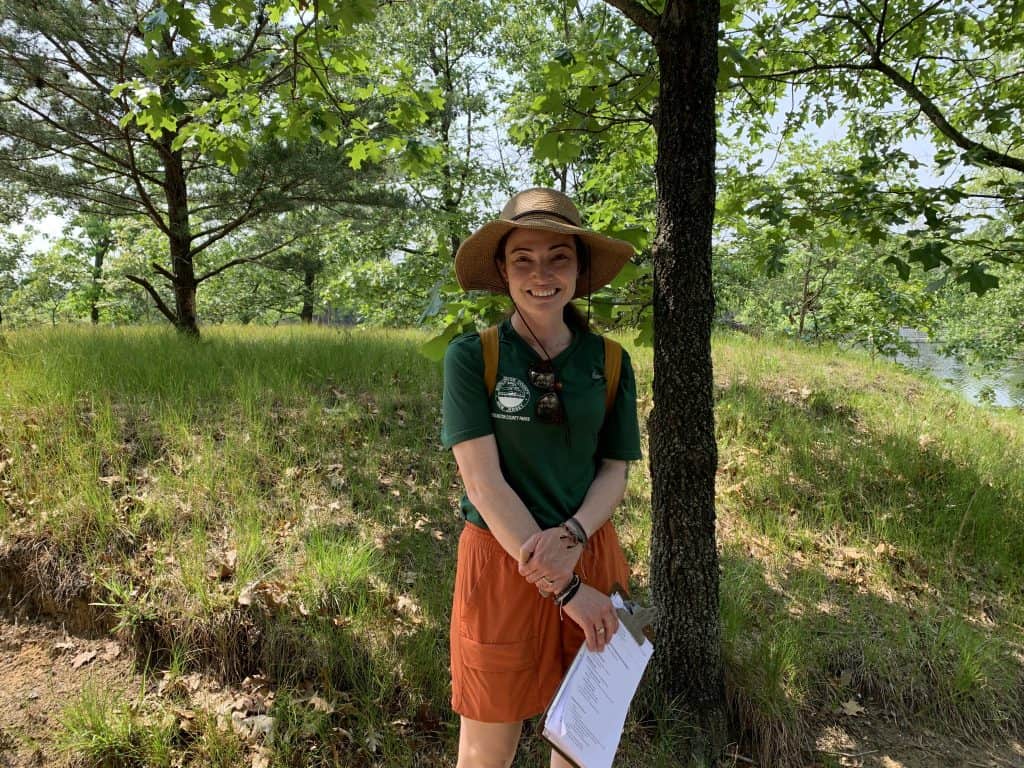

The Burlington County Parks System held its botany basics series last month, a nature program that introduces a variety of plant species to residents.
“When you really start to pay attention to the types of plants that are around you, it just makes everything that much more dynamic and fascinating,” said naturalist Gina DiMaio.
According to leafyplace.com, all types of plants are classified by two main groups, plants without seeds and plants with seeds, and are also classified by their genera, families and species. That type of classification allows for easy identification of plants and makes them easier to study.
General leaf shapes include egg-shaped leaves; wedge-shaped leaves; kidney-shaped leaves; and heart-shaped leaves, among others. Common leaf shapes include round, oval, lance-like and palmately lobed.
DiMaio compares botany, the scientific study of plants, with an Easter egg hunt.
“ … You never know what you’re going to come across,” she noted. “Things kind of pop up in different places, and it’s just that discovery of learning a plant and then being able to identify it and then going somewhere else and seeing that same plant pop up.”
This year marks DiMaio’s first spring as a naturalist for the county and she’s led two botany walks at Crystal Lake Park in Mansfield Township and two at Willingboro Lakes County Park.
Connecting with plant species and nature is something DiMaio not only enjoys on the walks, she also believes it helps for people to understand how plants are beneficial for the environment.
“Rather than just walking through a park and … everything looks the same, everything looks like a green plant, it’s just like green wallpaper,” she explained. “But once you start identifying them, it paints a brighter picture of what’s going on around you.”
The naturalist’s favorite plant family is the Heath group, also called Ericaceae, which includes blueberries, huckleberries and cranberries. DiMaio noted how important it is for people interested in botany to get to know plant families.
“If you know characteristics of a plant family you can go somewhere else, and maybe you don’t know what that plant is, but you recognize that it’s related to other plants in that family,” she said.
DiMaio likes connecting with residents who share her interests, and she’s always up for teaching them something new.
“When you’re outside on a walk, you’re actively participating, whether that be using binoculars or eye loops to look at the plants,” she pointed out. “When you’re hands-on touching things, looking at things, smelling things, you’re connecting with that.
“To see people experiencing that is really rewarding.”
For more information on the county’s nature programs, visit https://www.co.burlington.nj.us/235/Parks.


